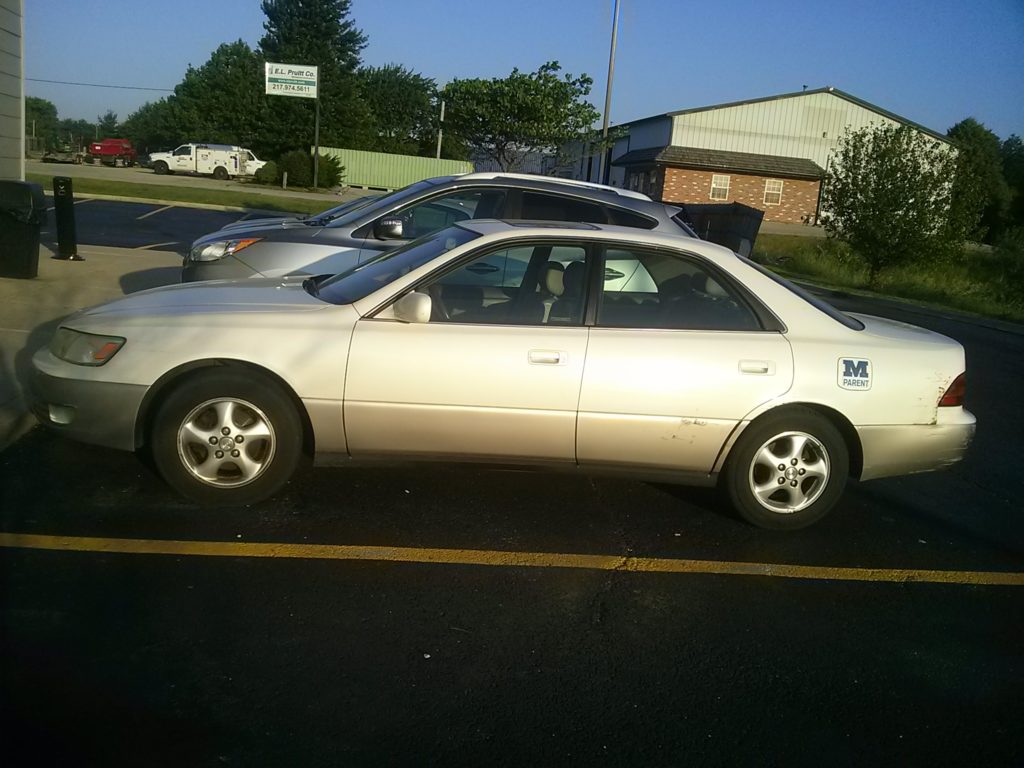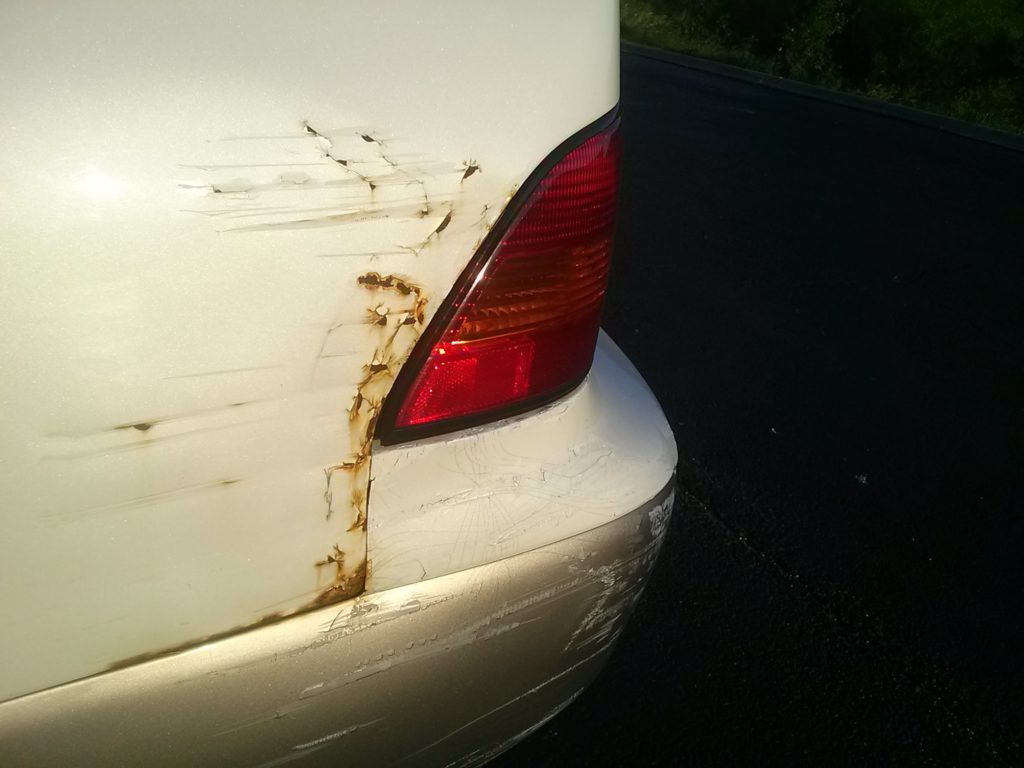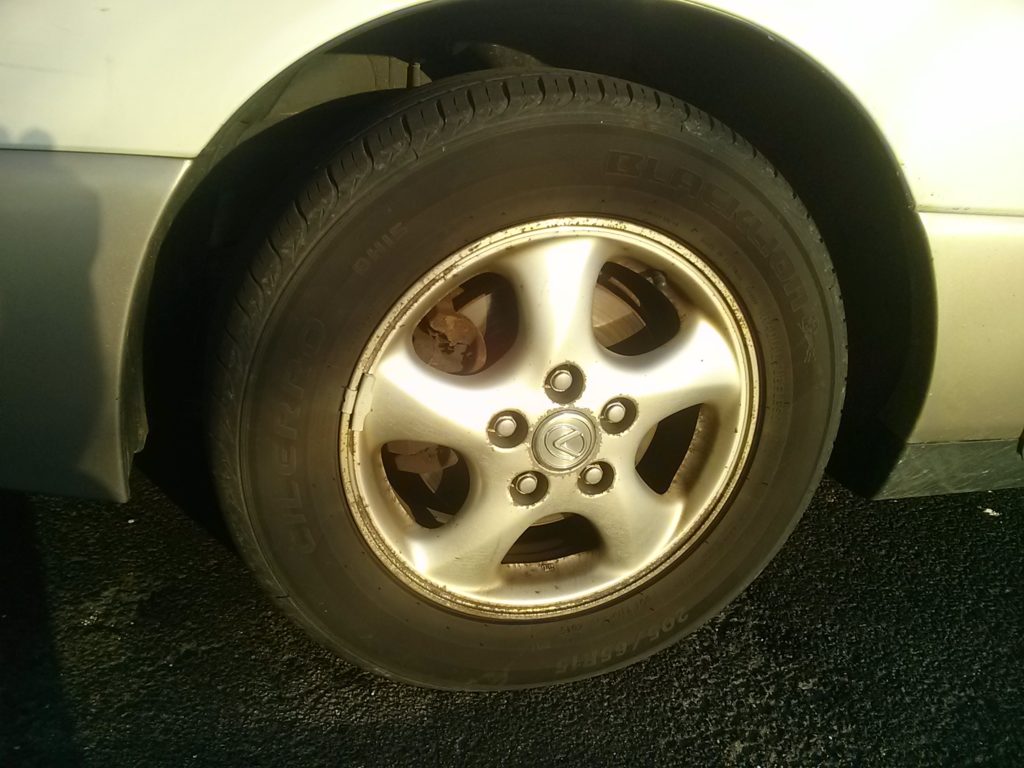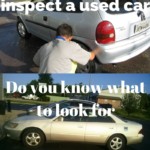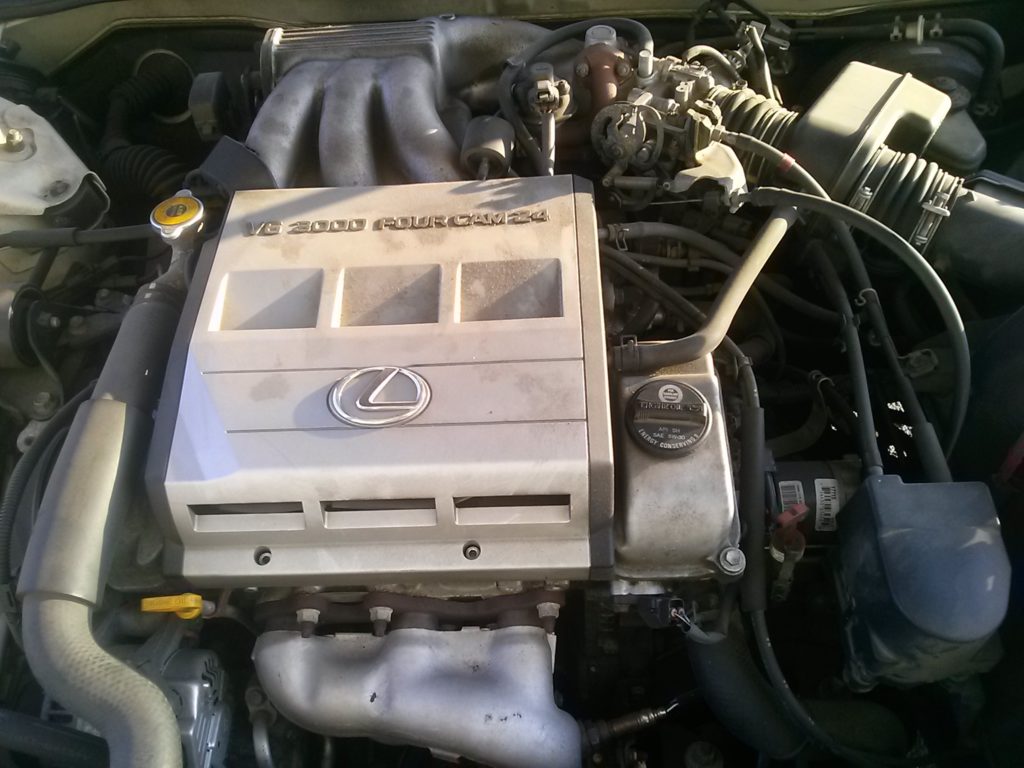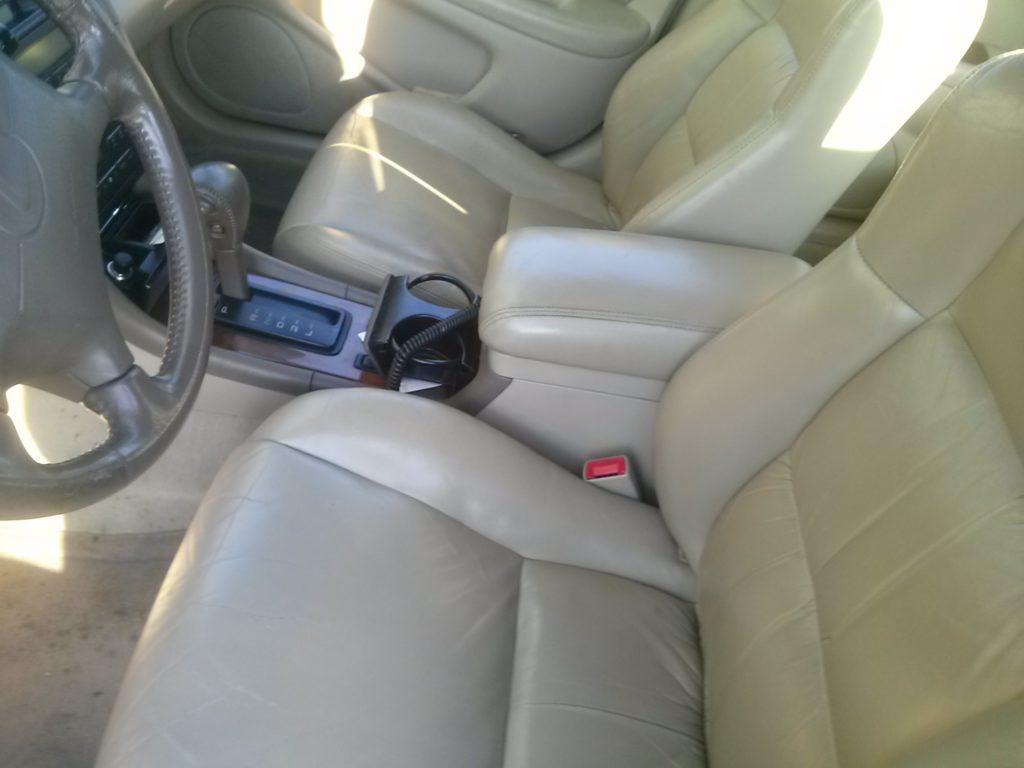Used Car Inspection Checklist
Here is a Free Used Car Inspection Checklist you can use to inspect the car you are thinking about buying.
Any time you consider buying a pre-owned vehicle, take a used car checklist with you and use it to do an inspection. It will help you avoid overlooking the condition of various items and components that can make the car a good buy—or not. After purchase, you’ll be far less likely to say “I didn’t think to look at that” or “I meant to look at that and forgot.” Don’t leave important details to quirks of memory. Take a used car inspection checklist with you, and use it as your guide.
If you are more conscious about what you are buying you will get more car for your money.
Note: When i buy a used car i have a two step process i use. First i do a used car inspection to insure the car meets the basic criteria of being bought. Read my article “how to inspect a used car“. It the care passes this inspection I then use the checklist discribed here.
Any used car you’re thinking about buying should pass some basic tests to prove viability. A used car checklist presents a number of components you’ll want to inspect prior to purchase. Using a checklist and employing pass/fail scores, the car can either be promoted or eliminated as an acceptable purchase.
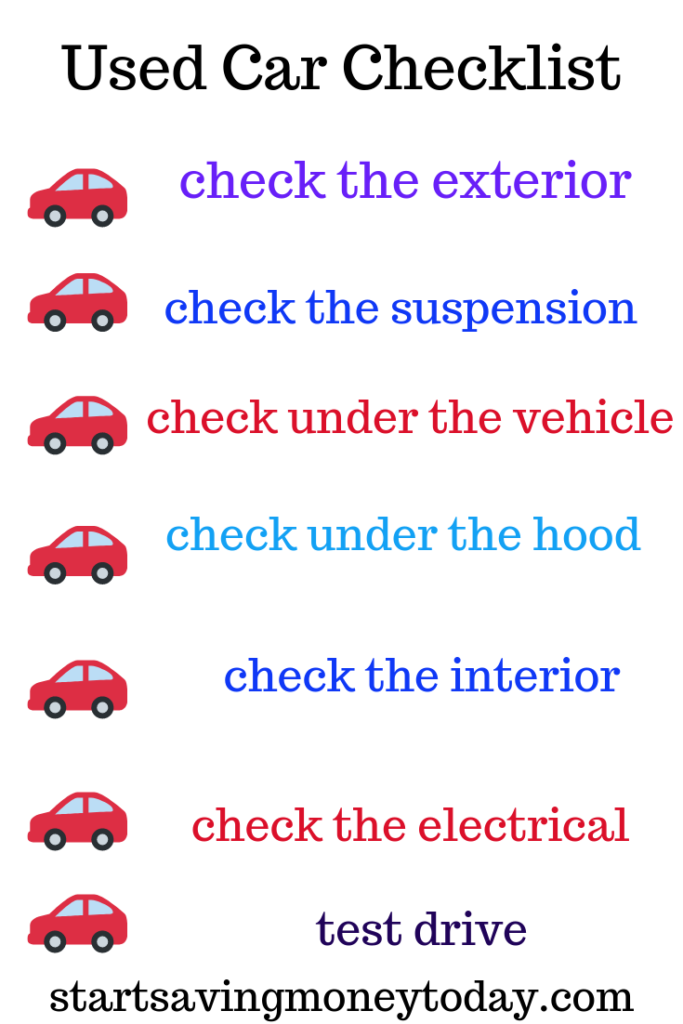
When you inspect a used car you need to use a checklist to avoid missing important items to inspect.
What Can You Afford
All though price is technically not a point on any used car inspection checklist it’s a very important part of car ownership.
How much you can afford to spend on a car? This is a good place to start. If you’re going to be making car payments, most financial advisors recommend that they not exceed 20% of your take-home pay. I, on the other hand, am not a financial advisor. I’m a frugal guy who’s lived and learned some things about life through a number of financial adventures. Personally, I would rather take the bus or walk than make car payments. My recommendation—save the money, pay cash for a car. We should work to stay debt free.
Build A Target
Mini Cooper. Midsize Sedan. Full-size car. SUV. Truck…
Why do you need a vehicle? What will be its main purpose? Getting (only) you to and from work? Ferrying the kids to school or ball games? Weekend drives? All of these? Maybe more?
If you’re single and buying a car, your needs will be different than someone who is buying a car for their family of four.
Who will be the principle driver? Or, will there be more than one driver? Safety is important. If you’re buying a car your teenager will drive, you may want some features you wouldn’t need for yourself. Comfort and convenience are other considerations. If an elderly person will regularly ride in the backseat or you have car seats for children, you want a vehicle that’s easy to enter and exit. And, of course, cost counts.
Cost. Safety. Condition. Style. Amenities. Comfort… What are your expectations? Know what you are looking for before you go to buy a car.
If you’re gong to inspect a vehicle yourself, take a friend with you. While buying a used car can be a very frugal move, you know a good one will not be inexpensive. The idea of spending a significant amount of money can make some of us anxious. We might hurry through the process, or try to go “cheap.” Either of those tendencies is likely to buy a problem rather than good transportation. Your friend won’t be as emotionally involved with the idea of buying a car as you are. He might notice things you don’t.
Do Your Homework
Don’t kid yourself, finding a trouble free used car is not a matter of luck. Finding a good used car requires research, investigation and of course a good used car inspection. There are a lot of used cars out there. Which are the best? Which are the worst? Consumer Reports, Edmunds,and Carfax provide real-world, reliable information that will help narrow your search. You want to minimize the risk of getting a lemon.
If you have a regular mechanic, try to arrange for them to go a good used car inspection before you make a purchase (most mechanics have a used car check list they use). Undoubtedly, your mechanic will charge you to do this, but a conscientious analysis can be invaluable. There are times, however, when you “just have to get your own hands dirty.” Below, I’m including a number of important features you can check out yourself. You should be able to do a good used car inspection for yourself without training.
If you’re gong to inspect a vehicle yourself, take a friend with you. While buying a used car can be a very frugal move, you know a good one will not be inexpensive. The idea of spending a significant amount of money can make some of us anxious. We might hurry through the process, or try to go “cheap.” Either of those tendencies is likely to buy a problem rather than good transportation. Your friend won’t be as emotionally involved with the idea of buying a car as you are. He might notice things you don’t.
Ask About A Warranty
If you are looking at a vehicle in a car lot, read the window sticker. It will tell you if any factory warranty is in force, and the dealer should help you with the transfer. If you are making a private purchase, contact the Warranty Division of the car manufacturer (e.g. General Motors, Toyota Motor Corporation…) for warranty information..
Note: Just because you are buying a use car from the dealer doesn’t mean you don’t need to do a good used car inspection. They could have missed something that is important.
Extended warranties are another issue. Often, an extended warranty is an aftermarket purchase, and if transferable, has to be initiated by the seller. Also, there may be a transfer fee.
Used Car Inspection Checklist
I mentioned above that you might have a mechanic who can take advise you on the condition of a vehicle you’re interested in, but that’s a service that might not always be available. You may need to do a used car inspection yourself. You can learn a lot by using your eyes, ears, and nose.
Do the inspection in daylight.
If there is a mechanic you can take the car to this used car inspection will save you trips to see him, because you will spot most of the obvious problems before consulting your mechanic.
The car should be sitting on a dry, level spot. The engine should be “cold.” There are a few items under the hood that should be checked before the car is started. The vehicle should have been sitting in the same spot without the engine running for at least an hour before you do your inspection. You’ll look at some components more than once—checking different features when the motor is running and when it’s not. You’ll be in and out of the vehicle a couple of times before the used car inspection is finished. Be sure to wear clothes you don’t mind getting dirty.
As a part of the used car inspection you need to check the paperwork. There are a varity of scamers out there jsut waiting to take your money.
Caution: Don’t test the heater or air conditioning until you are ready to start the car.
Exterior Inspection
Body: Check the roof, the door exteriors, and all body panels for scratches, dents, rust, or bubbling paint. The paint color and the finish should be the same on each panel and the roof. Minor scratches and flaws are nothing to be alarmed about. Rust, however, is a problem. Avoid buying a car that has rust or bubbling paint. These conditions do nothing but worsen over time and, eventually, become expensive to repair.
Check the body panels and doors for straight lines. You’re looking for misaligned panels. The panels should line up properly with adjoining ones. When checking the doors, be sure there is no large gap between the door and the panels on either side.
If the car is a convertible, you’re looking for tears, mildew, and stains in the textile roof.
Mirrors: Make sure the side mirrors are securely fastened to the car. Also, check for crack and chips. If the vehicle has manually adjusting mirrors check to make sure they function easily.
Windows: Check all the windows in the car from the outside. You’re looking for cracks, pocked areas, and stone chips. Cracked, chipped, or pocked glass only gets worse with time. If you’re buying from a dealership try to persuade them to replace or repair the deficiency. If you’re making a private purchase, the seller, probably, won’t be amiable to that idea; if you buy the car, you’ll have to do this yourself.
Hood and Trunk: Open the hood and trunk gently. They should open easily—without binding. They should close and lock into place. Open the driver and the passenger doors slowly. Lift each slightly and let go. Do they seem to be loose on their hinges? That’s not good. (The hatchback hinges on a car I once owned wore out and broke; the hatch door fell off. Talk about a safety hazard. That door was HEAVY and hard to rig back in place. The fix wasn’t covered by insurance, and it wasn’t cheap.) Also, check the rubber seal on the hood and trunk (all the doors, too). It should not be worn out, torn, cut away, or missing. If these seals are missing or damaged, there will be leaks when it rains. (A musty odor is a sign the carpet has been wet.) Also, while you have the trunk open, check the spare wheel compartment for rust—and, of course, it should be dry.
Suspension
Walk around the vehicle. Is it standing level? If one corner of the car is closer to the ground than the other three, it’s very likely the springs, struts, or shock absorbers are compromised. Bounce each corner of the vehicle. It should rebound just once; it should not continue to bounce. Grab the top of each tire and tug on it. If you hear a clunking or ticking sound, the wheel bearing or the suspension may be in need of repair.
Tires
Tires should not be bubbled or cupped.
Now, it’s time to check the tread wear on each tire. The legal depth of the tread is 1/16 of an inch. You can buy a depth gauge for a few dollars at any auto parts store.
If your hands aren’t dirty yet, they will be when you get done with this, but Be Careful. Look first to see if any of the steel belts are exposed. If they are, don’t do this part of the inspection. You’re going to be running your hands around the tire and might be cut by the edge of a belt; those edges are like razors. If you can see the belts, the tread is gone in that spit, and you already know you’ll need to replace the tire.
Using both hands, start at the top of each tire and run your palms around it. You’re feeling for defects. The tread should be evenly worn across each tire. If the tires are worn on the inside and the outside, with the center less worn, the tires have been driven underinflated. If the center is worn more than the outside, the tires have been driven over-inflated. If the wear pattern is greater on the inside, the outside, or there is cupping on any of them, the car (probably) needs an alignment. In any case, you may need to replace all four tires.
Tread and, therefore, a vehicle’s alignment can be great indicators of how well the car has been treated. If a car is out of alignment, someone may have driven over a curb. That’s not usually a horrible accident, but if the vehicle is knocked out of alignment, it can affect the suspension system. A worn or broken suspension system can lead to steering problems, and a steering problem is an accident waiting to happen. Uneven tread wear by itself isn’t necessarily a sign of anything dire. It does mean you’ll want to take into consideration any suspicious indications from that suspension check you did just before you inspected the tires.
The tire sidewall is another surface to check. You’re looking for crack, bulges, and dry rot. Any of these conditions mean the tire is not good.
Aggressive driving can cause wear to the shoulder of the tire. That’s where the sidewall and the tread meet and includes the first block of tread on the outer side of the tire. If that area is worn, it’s a good sign the vehicle has been driven hard (which could include multiple encounters with curbs, other solid obstructions, or many hard cuts when turning or changing lanes.) A low mileage car with replaced tires should give you a “heads up” towards this abuse. Aggressive driving can contribute to worn tires and a worn suspension system.
Under The Vehicle
If you are able, look under the car. Check for oil, grease, and antifreeze leaks. Water drops may not be reason for concern; that could just be runoff from the air conditioning.
Tailpipe: Wipe the inside of the tailpipe with your finger (yuck!) or better a soft cloth. The inside of the tailpipe should be gray and dry. If it has a black or greasy residue, the engine is probably burning oil. That’s a red flag.
The underside: Slide under the car to inspect for grease, oil, and coolant leaks. While you are down there, take a look at the underside of the car. Are there broken items or dents in the bottom of the car? Especially, check the fuel tank for dents. (They’re good candidates for future fuel leaks.) Dents or welding marks on the underside are a good indication that this car has been in an accident.
CV joints: If the car has front wheel drive, check the boots that are inside the front wheels for splits or grease leaks. If either condition exists, the grease that lubricates the axel (and moving parts connected to it) is being lost. Repair is, absolutely, required—and it’s expensive.
Under the hood—Engine Related Components
The following are some more checks to do before starting the car.
The engine compartment: It’s normal to have dust and dirt in the engine compartment. (If the engine is very clean, it’s possible the seller has had it steamed cleaned in order to erase troublesome indications.) You are looking for oil splatter (oil slung under pressure) and leakage. I know you’ve already been under the car, but you may want to take another look to make sure there is no evidence of leakage directly under the engine.
Battery: Look for corrosion on the battery. If the battery has caps, remove them. If the cells are low on electrolyte, the battery may just be old. However, it could mean the battery is working too hard. If this condition exists, it would be a good idea to have a mechanic test the starting and charging systems.
Some maintenance-free batteries have a built in charge indicator. These indicators reveal the condition of one cell only. They are not reliable.
Hoses and belts—wires, too: Squeeze the hoses running to the various engine components: radiator, air conditioning, power steering, etc. The material should be firm and flexible, not rock-hard, cracked, or mushy. Examine the belts for cracking and fraying. If possible run your hands along the belts to get a better idea of their condition. Hose connections should be tight and belts should sit firmly on pulleys. These parts should be in good condition. If they’re not, loss of fluids or a thrown belt could mean that your first ride in the car ends with a tow to the repair shop.
If you see hanging (unconnected) hoses, just accept that there’s a problem. The same goes for wires; unconnected wires are a sure indication of electrical issues (which could mean a fire hazard.)
Fluids: Consult the owner’s manual for the location of each check point and appropriate safe ranges for the various fluids. Please note that some fluids need to be checked while the engine is cold, others after it has had a chance to warm up.
Engine oil: The reading for this fluid is most accurate when checked while the engine is cold. Use the dipstick to measure the oil. Then, take a drop or two on your thumb and rub between your fingers. A gritty feeling is an indication the motor has serious problems. Also, the color of the oil will give you some information. Usually, engine oil will be dark brown or black. If it’s a honey color, it’s new. Why was it recently changed? (Because the owner is conscientious, and wants to favor the buyer with fresh fluids? Or, to cover up a problem???)
Power steering and brake fluids: The section on fluids in the owner’s manual will give you the location and appropriate procedures for checking these fluids. As with any fluid, if the level present is outside the safe range, you need to assume there’s a problem, the severity of which warrants further investigation. (FYI: Engine temperature doesn’t influence how these two particular fluids measure. It does affect the engine oil (motor needs to be cool) and the transmission fluid (motor needs to be hot).
It’s time to get into the car. You can close the hood for now, or leave it open; you’ll be taking another look in the engine compartment shortly.
Interior
Smell: Use your nose. After you open the car door, what do you smell? Do you smell an acrid odor? The owner was probably a smoker. Odors are difficult to get rid of, and with tobacco there is some concern about residual carcinogens. If you don’t like the way the car smells, pass it up. If you smell a musty or mildew odor, the car may have had leaks or been victim to a flood.
Carpet: Remove the floor mats and look for water spots or dampness. Some of the damage may not be immediately apparent, but floodwater can cause failure to a number of systems dependent on a vehicle’s electronic or mechanical workings. It also gives rust and mildew (mold) a place to grow. If you find water spots, stains, or other evidence of dampness, you’ll want to consider very carefully the risk in buying this car.
Pedals: Since you’re focused on the lower part of the interior, take a look at the pedals now. If you’re looking at a car with low mileage, the rubber pads on the gas, brake (and if there is one, clutch) pedals shouldn’t show much wear. If they’re new, it’s an indication that some problem is being camouflaged. Usually, it means the car has been driven hard; consider what you observed when you inspected the suspension, tires, and underside of the vehicle.
Roof: Examine the interior of the roof. You’re looking to see it the headliner is coming down. You’re also looking for water stains, especially around a sun/moon roof, also around the top of the doors, the windshield, and rear window.
Electrical Checks
Take the driver’s seat.
Instruments and controls: Don’t start the engine yet, but turn the ignition switch so you can check the accessories. Observe the gauges and warning lights. They should all come on for a few seconds, and then go back off.
Ignition: Now start the engine. Is it easy to start? Does it idle smoothly? Are the indicator lights and gauges working correctly? Let the engine continue to run, and keep an ear as to how it sounds while warming up. It should slow down a couple of times before it reaches normal operating temperature; this will probably take a few minutes.
As the engine is warming up, there are some other features you can check on.
Power features: With the engine running test each switch and lever: Windshield wipers, windshield cleaning fluid sprayer, window controls, mirrors (outside and rear view), sun/moon roof, maybe a motorized antenna… And if you’re looking at a convertible, be sure the retractable roof works smoothly.
Heating and Air Conditioning: This is a good time to check these features. Do they put out warm or cool air in a reasonable amount of time?
Sound system: Most cars have an AM and FM radio. Test the reception on both the AM and FM. Does adjusting the volume, tone, balance, and fade controls make the appropriate differences? Does decent sound come from all the speakers? Depending what else is a part of the sound system, test each individually. An example would be a CD player. Try to load a CD and eject it. Test the sound quality. (Taking your own CD along for this is a good idea—in case the seller doesn’t have one on hand??? Just be sure it isn’t a favorite; there’s always a chance it might not eject.) You should go through the same check for a USB connection, also for an iPhone—if there is one.
Lights and lenses: Ask your friend (who, hopefully, has been giving you some input all through the inspection process), to confirm from outside the vehicle that all lights, turn signals, and four-way flashers work as you turn them on from the inside. His presence will be especially helpful when you test the break and backing lights. Make sure all light lenses and reflectors are intact, not cracked, fogged with moisture, or missing.
Seats: Sit in each seat—try them out. Most of us spend a good bit of time either as a driver or passenger in a car; the experience should be as comfortable as possible. Examine each seat to ensure the upholstery is in good shape—ideally, without tears or worn spots. Test each seat control to make sure they work properly. If the car has heated seats, check to see if that feature works. It seems to me that this feature wears out easily and is one people rarely have fixed. A nonworking seat warmer isn’t a deal breaker, but it could be a bargaining chip.
On the other hand, the mechanisms for adjusting seat position, including reclining, are very important. There’s nothing worse than a reclining seat that won’t return to the upright position—especially, the driver’s seat. (Believe me, I know.)
There’s one more thing to check from the driver’s seat (and it’s important): Can you adjust the seat so that you can reach the pedals easily? Not being able to reach the pedals and the opposite—not having room to get off them quickly—are both dangerous.
More Under The Hood
After the engine temperature has reached the normal operating tempurature, keep it running and do these checks.
Radiator: Examine the radiator for corrosion and leakage. There should be some orange or greenish fluid in the plastic overflow reservoir—any other color is not good, and could be a sign of serious engine damage. Check the outside of the reservoir for stains; these would indicate pinhole leaks.
Transmission Fluid: Check the transmission fluid with its dipstick. The fluid should be pink and should smell like oil. It should not have a burnt odor. Also, there should also be no flecks of metal on the rag after you wipe the dip stick. Metal left behind is a sign of serious trouble. The transmission fluid should be checked with the engine warmed up and running. For specifics on transmission fluid, refer owner’s manual.
Time for A Test Drive
A good use car inspection will include a road test.
Allot about ten or fifteen minutes for the test drive.
If it’s not already running, start the engine. Make sure the safety brake is off. Does the engine idle smoothly?
Accelerate slowly. Does the vehicle have the pick up you should expect? Is it responsive or slow and sluggish? Does the car pull to the left or right, and does speed affect this?
Test the brakes at different speeds. At speeds of 20, 40, and 60mph, do two tests: Slow down slowly for one test, and for the second, slow down quickly. Do you notice a pulling to either side or a wobbling during any of these tests? This tests both the breaking system and the suspension system. Pulling or wobbling indicates a problem. A mechanic needs to determine its source and severity.
During or after the test drive, do you notice an odor of overheating or exhaust? Either is a red flag for motor, transmission, or the exhaust system problems, and needs to be checked out by a mechanic.
Conclusion
You want transportation at a reasonable price. You don’t want something you’ll be replacing immediately. The checks and tests on this list are very similar to the ones a mechanic would perform. If you have a good used car inspection checklist and you do a good inspection on vehicles you’re interested in, you’ll get information that can help you choose a reliable vehicle suited to your purpose.

